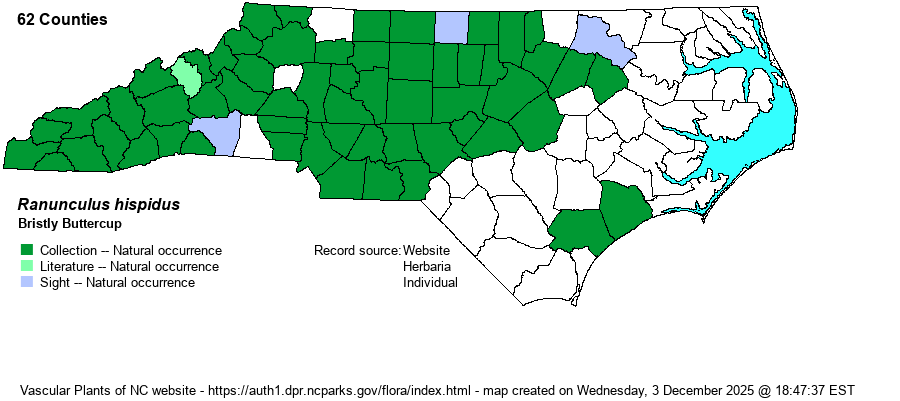| taxonName | relationship | relatedTaxonName | relatedTaxonRefText | relComments |
|---|
|
|
|
|
|
|
| Ranunculus hispidus | = | Ranunculus hispidus var. hispidus | Gleason and Cronquist (1991) | |
| Ranunculus hispidus | = | Ranunculus hispidus var. hispidus | Flora of North America (1993b, 1997, 2000, 2002a, 2002b, 2003a, 2004b, 2005, 2006a, 2006b, 2006c, 2007a, 2009, 2010) | |
| Ranunculus hispidus | = | Ranunculus hispidus var. hispidus | Kartesz (1999) | |
| Ranunculus hispidus | = | Ranunculus hispidus var. hispidus | | |
| Ranunculus hispidus | = | Ranunculus hispidus var. hispidus | | |
| Ranunculus hispidus | = | Ranunculus hispidus var. hispidus | | |
| Ranunculus hispidus | = | Ranunculus hispidus var. hispidus | Tamura in Kubitzki, Rohwer, & Bittrich (1993). Keys adapted, in part, from C, GW, X, Y, and Z. [also see Ficaria and Hale | |
| Ranunculus hispidus | > | Ranunculus hispidus var. hispidus | Fernald (1950) | |
| Ranunculus hispidus | > | Ranunculus hispidus var. hispidus | Gleason (1952) | |
| Ranunculus hispidus | > | Ranunculus hispidus var. hispidus | Flora of West Virginia | |
| Ranunculus hispidus | > | Ranunculus hispidus var. falsus | Fernald (1950) | |
| Ranunculus hispidus | > | Ranunculus hispidus var. marilandicus | Gleason (1952) | |
| Ranunculus hispidus | > | Ranunculus hispidus var. eurylobus | Fernald (1950) | |
| Ranunculus hispidus | > | Ranunculus hispidus var. eurylobus | Gleason (1952) | |
| Ranunculus hispidus | > | Ranunculus hispidus var. eurylobus | Flora of West Virginia | |
| Source: Weakley's Flora |

